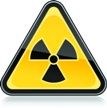
Of the Fukushima nuclear power station workers who’ve been screened for radiation exposure, none have levels high enough to warrant medical treatment, according to Japan’s Nuclear and Industrial Safety Agency (NISA).
In a statement issued yesterday, the NISA released statistics on workers, emergency responders and citizens who were injured or exposed to radiation during and in the events following Friday’s massive earthquake.
Although the agency cautioned that complete figures were not yet available, it reported that of the 18 employees screened so far, radiation levels ranged from a high of 106.3 mSv (millisieverts),with has “no threat of internal exposure” and does not require medical treatment, to lesser levels that had no impact to health.
Six of the seven people working in Unit 3 of the power station were injured during the explosion following the earthquake; one sustained two fractured legs, one a cerebral infarctation, and two with lesser, unspecified injuries. One employee was transported to a hospital by ambulance after complaining of chest pains. Two remain missing.
The NISA said that five members of Self Defense Force who worked to supply water at the power station were decontaminated after they were found to have been exposed to radiation. Counts that were in the 30,000 cpm range before the procedure measured between 5,000 and 10,000 cpm after it. One First responder was subsequently transferred to Japan’s National Institute of Radiological Science for additional treatment.
Residents living near the plant have also been undergoing screening for radiation exposure. Although exact figures are hard to come by, in one group of 133 people evacuated from a hospital, 23 had radiation levels above 13,000 cpm and were decontaminated.
An effort to avoid nuclear disaster at the facility by having helicopters dump water on it was discontinued today.